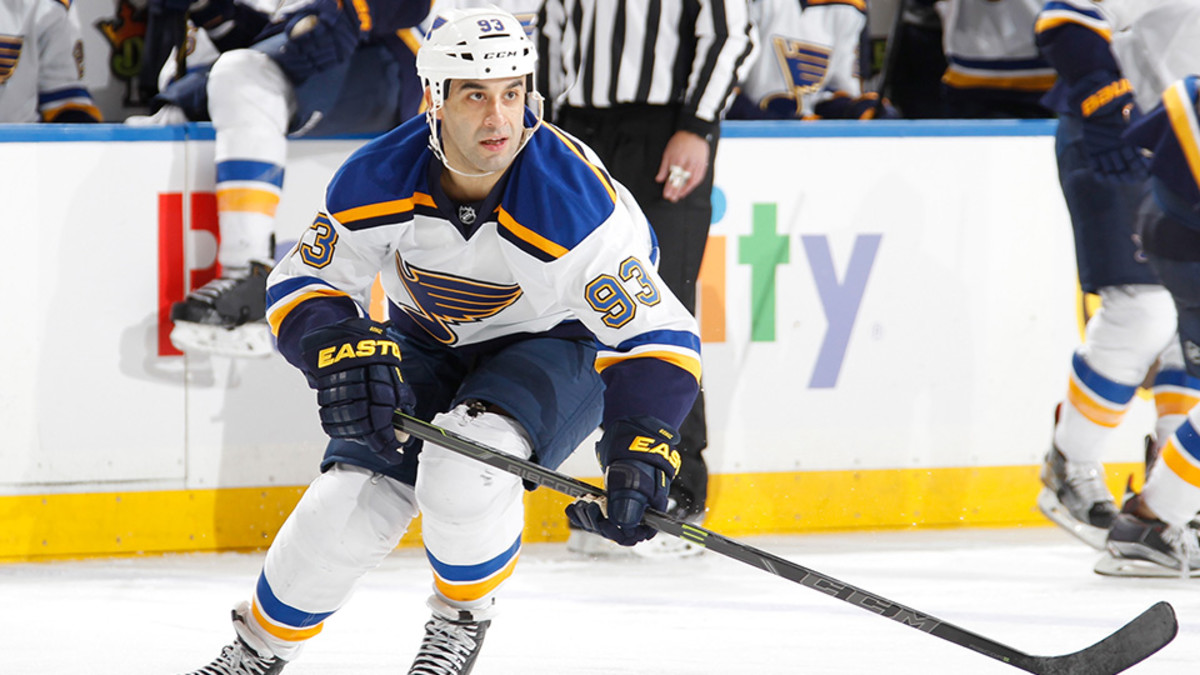Blues’ Scott Gomez part of effort to save Alaskan girls’ hockey
As 2015 enters its final month, the year has been a monumentally successful one for women’s hockey paced by the foundation of the NWHL as North America’s first fully professional women’s league. The increasing media attention that the sport’s top female players are starting to get is reason for optimism.
But there are still many challenges that women’s programs on all levels–including the NWHL–face in terms of securing the financing that is needed to stay afloat. Sometimes these programs can scramble and find funding, but this struggle has become nearly as common as lacing up skates, shooting or scoring.
With modest early goals and big plans, NWHL has reason for hope
In Alaska, a high school girls’ hockey circuit in the city of Anchorage has been on the brink of going under practically since the day it was founded in 2003. The plummeting price of oil that left the state in a severe recession has further jeopardized the program. Fortunately, Alaskan hockey legend Scott Gomez of the St. Louis Blues, has been working to save it.
The Anchorage native, who has won two Stanley Cups and earned more than $52 million since his NHL debut with the New Jersey Devils16 years ago, has rebuilt rinks, raised funds and even helped save the city’s girls hockey program when it almost folded two years ago.
“The game has provided so much for me and my family,” Gomez says. “But at the same time, you have to have the opportunity. Even if you don’t make the professional ranks, the people you meet and the lessons you learn [make it] important for girls to have those opportunities, just as it is for boys. I wanted these kids to experience some of the things that I did.”
Gomez’s generosity is about recognizing his own roots in the sport. He told SI.com that when he was a kid he may never have been able to afford the costs of playing hockey had it not been for similar philanthropy from The Boys & Girls Club of America.
“Back when I was growing up, The Boys & Girls Club would provide (hockey) gear for you,” Gomez says. “You needed your own skates, but they provided everything else. I still remember getting up and waiting in line to get our gear at The Boys & Girls Club.
“The Boys & Girls Club is probably one of the reasons I am in the NHL.”
Ex-Wisconsin hockey player helping Kenyan women’s soccer league
This fall, after the number of teams in the Anchorage area was reduced from six to four, the school district decided that this would be the last season of girls’ hockey as a public school sport, despite the fact that boys’ hockey in the state continues to thrive. Even worse, the program’s budget deficit was so large that Gomez, who will earn $575,000 playing for the Blues this season, couldn’t bridge it on his own. So the Dick’s Sporting Goods chain came to the rescue with a contribution of more than $200,000 even though it doesn’t have a store in Anchorage.
“It was definitely the 11th hour,” is how local coach and Scotty Gomez Foundation hockey director Mandy Reale recently described it to SI.com.
“We have our ‘Sports Matter’ program,” says Ryan Eckel, the VP of Brand Marketing for Dick’s. “We know from statistics that student athletes are four times more likely to attend college. They score 40% higher on their test scores. Sports are one of the best development tools that we have.”
That was a big motivating factor behind the decision to help Gomez’s pet cause.
“We just couldn’t imagine Anchorage, the most populated place in Alaska, with one of the highest percentages of NHL players per capita [and] an entire gender not being able to play,” Eckel says.
NWHL reveals top selling jerseys
For now, a few hundred Alaskan girls will continue to play high school hockey during what would have otherwise been their final season. They’re now completely funded, with equipment, until 2018, but the program is still looking for a long-term solution that will keep it going. The hope is that donations from recognizable names such as Gomez and Dick’s will attract the attention that is needed to find permanent support.
“We’re going to have to do some fundraising,” Reale says. “This puts us in a position where we can show that there is something of so much value to our girls, and to support our girls. But now we have more than enough time, and hopefully some exposure, to find a way.”
































